Half of the space between the plates of a parallel plate capacitor is filled with dielectric material of constant K. Then which of the plots are possible?
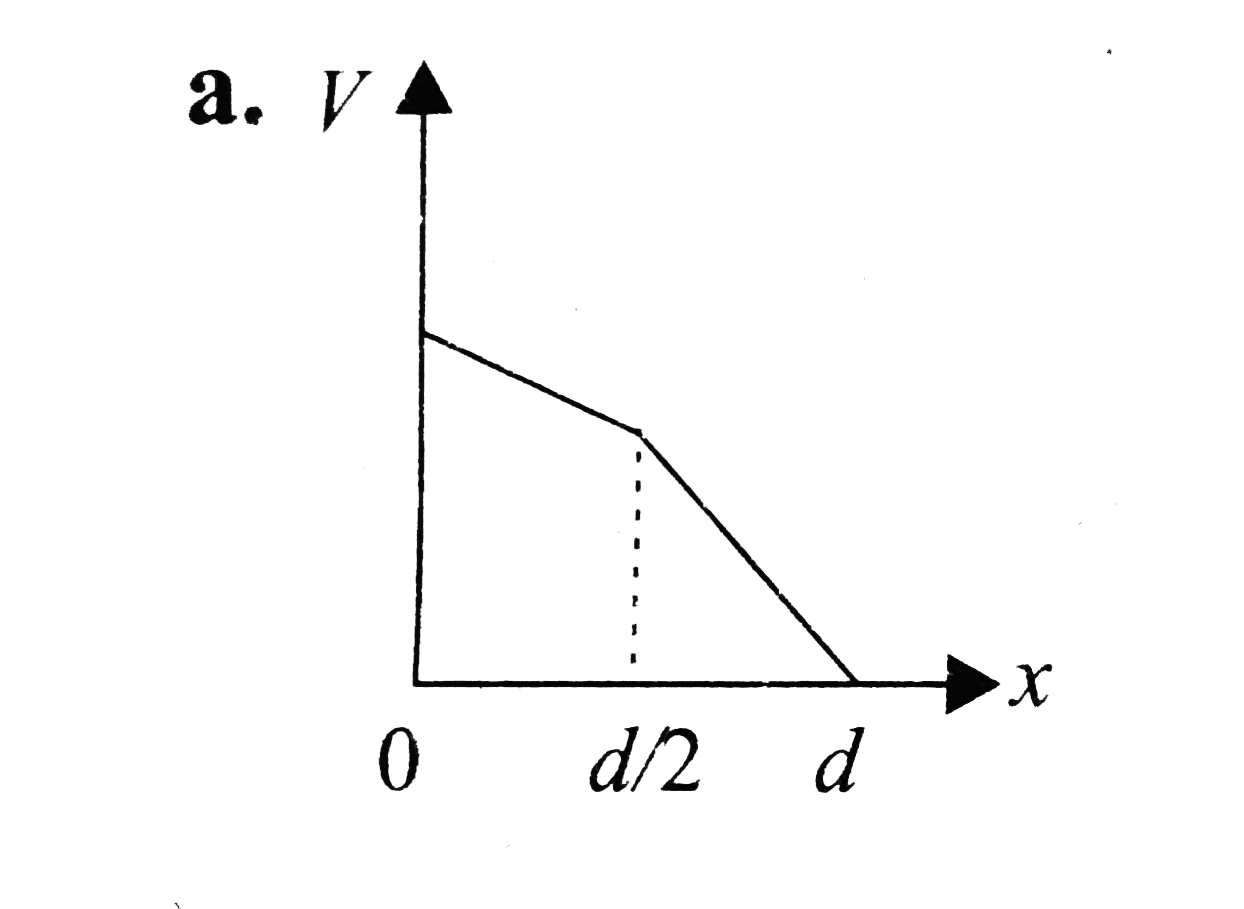

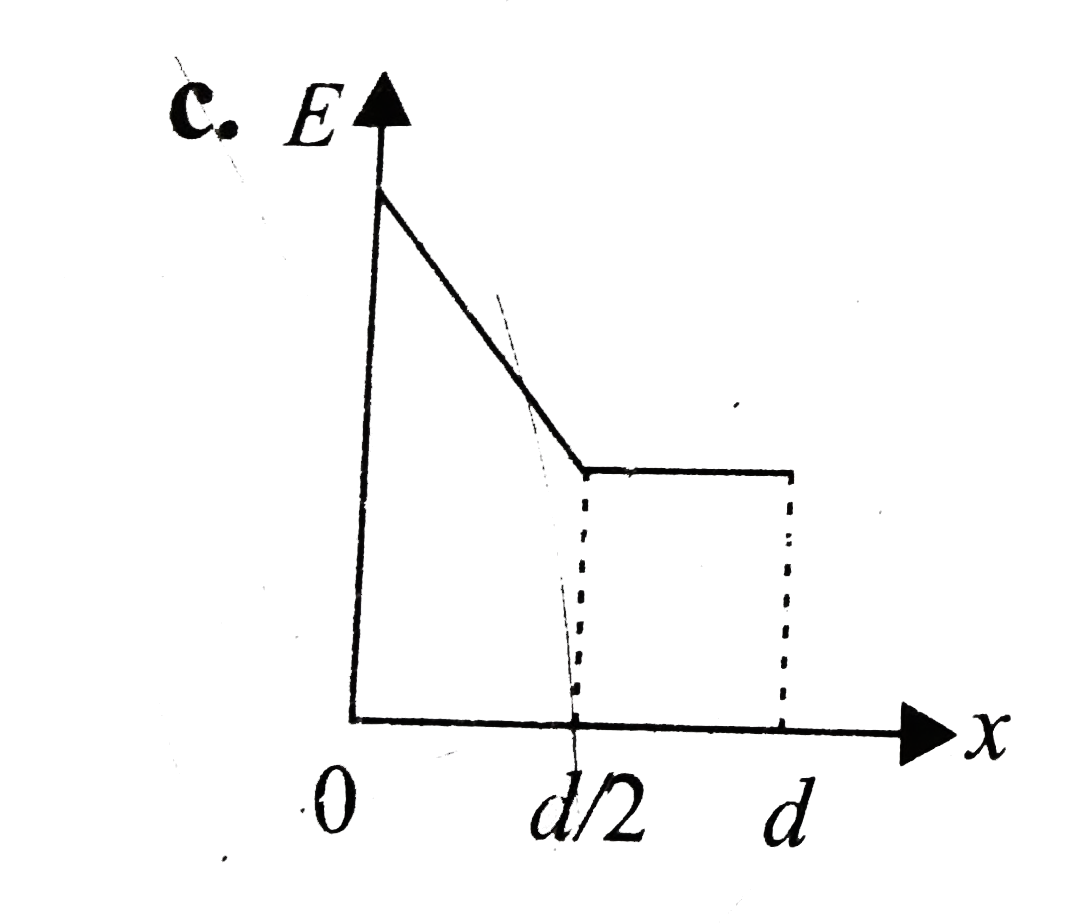
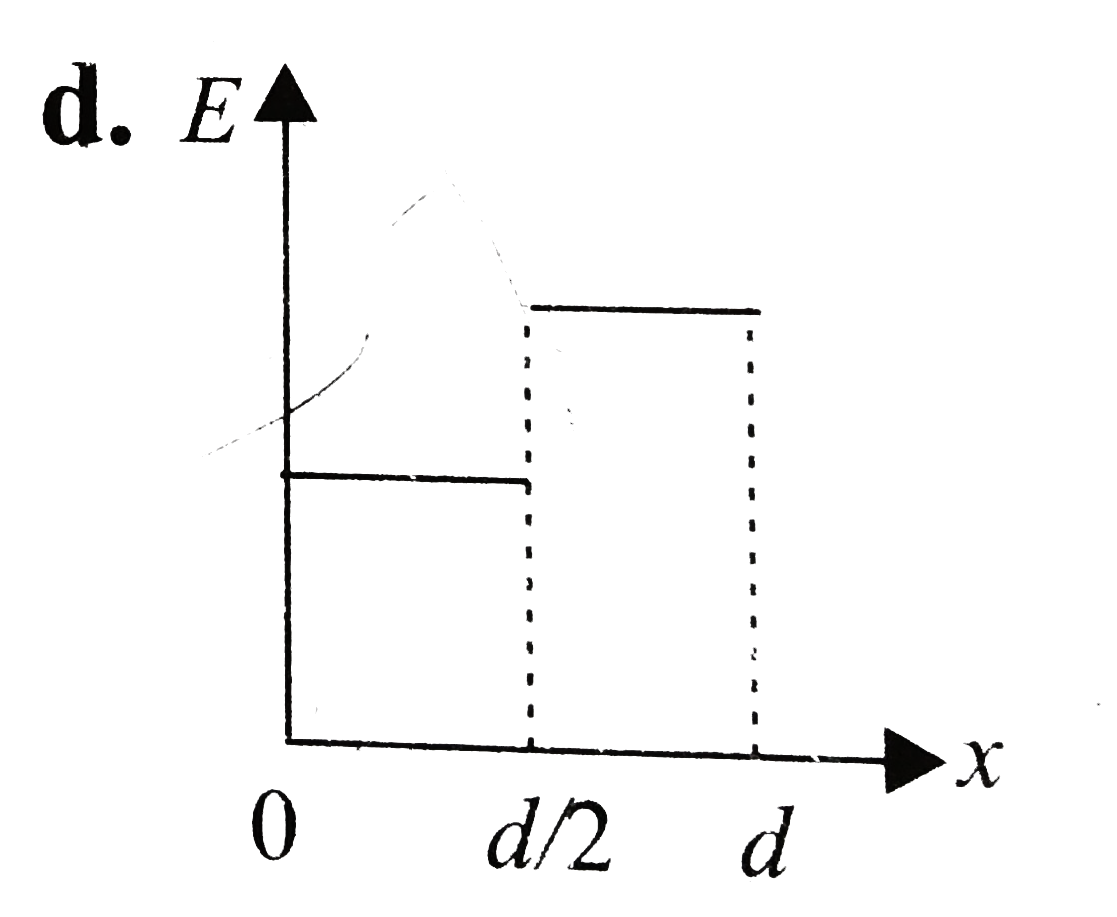
The correct Answer is:A, D
To solve the problem of a parallel plate capacitor with half of the space filled with a dielectric material of constant K, we will analyze the electric field and potential difference across the capacitor.
1. Understanding the Configuration:
- A parallel plate capacitor consists of two plates separated by a distance d.
- In this case, half of the space (i.e., d/2) is filled with a dielectric material of constant K, and the other half is air (or vacuum).
2. Electric Field in Different Regions:
- Let E be the electric field in the air gap (the region without the dielectric).
- In the dielectric region, the electric field E′ can be expressed as:
E′=EK
- This is because the presence of the dielectric reduces the electric field strength by a factor of K.
3. Potential Difference Calculation:
- The potential difference V across the capacitor can be calculated by integrating the electric field over the distance.
- For the air gap (first half):
Vair=E⋅d2
- For the dielectric (second half):
Vdielectric=E′⋅d2=EK⋅d2
- Therefore, the total potential difference V across the capacitor is:
V=Vair+Vdielectric=E⋅d2+EK⋅d2
- Simplifying this gives:
V=dE2(1+1K)
4. Graphical Representation:
- For the electric field E versus position x:
- In the air gap, the electric field E is constant.
- In the dielectric, the electric field E′ is constant but lower than E.
- Therefore, the graph of E versus x will show a step down at the boundary of the dielectric.
- For the potential difference V versus position x:
- The slope of V in the dielectric region will be less steep than in the air gap due to the reduced electric field.
- Hence, the graph of V versus x will show a steeper slope in the air gap and a gentler slope in the dielectric.
5. Conclusion:
- The possible plots for the electric field and potential difference are:
- Electric field E versus position x: a step function with a drop at the dielectric boundary.
- Potential difference V versus position x: a linear function with a steeper slope in the air gap and a gentler slope in the dielectric.
Final Answer:
The possible plots are:
- Electric field E versus position x: Option D (step function).
- Potential difference V versus position x: Option A (linear function with varying slope).
- A parallel plate capacitor consists of two plates separated by a distance d.
- In this case, half of the space (i.e., d/2) is filled with a dielectric material of constant K, and the other half is air (or vacuum).
- Let E be the electric field in the air gap (the region without the dielectric).
- In the dielectric region, the electric field E′ can be expressed as:
E′=EK
- This is because the presence of the dielectric reduces the electric field strength by a factor of K.
- The potential difference V across the capacitor can be calculated by integrating the electric field over the distance.
- For the air gap (first half):
Vair=E⋅d2
- For the dielectric (second half):
Vdielectric=E′⋅d2=EK⋅d2
- Therefore, the total potential difference V across the capacitor is:
V=Vair+Vdielectric=E⋅d2+EK⋅d2
- Simplifying this gives:
V=dE2(1+1K)
- For the electric field E versus position x:
- In the air gap, the electric field E is constant.
- In the dielectric, the electric field E′ is constant but lower than E.
- Therefore, the graph of E versus x will show a step down at the boundary of the dielectric.
- For the potential difference V versus position x:
- The slope of V in the dielectric region will be less steep than in the air gap due to the reduced electric field.
- Hence, the graph of V versus x will show a steeper slope in the air gap and a gentler slope in the dielectric.
- The possible plots for the electric field and potential difference are:
- Electric field E versus position x: a step function with a drop at the dielectric boundary.
- Potential difference V versus position x: a linear function with a steeper slope in the air gap and a gentler slope in the dielectric.
The possible plots are:
- Electric field E versus position x: Option D (step function).
- Potential difference V versus position x: Option A (linear function with varying slope).
Similar Questions
Parallel Plate Capacitors with and without Dielectric
View SolutionA parallel plate capacitor of capacitance 10μF is connected across a battery of emf 5 mV. Now, the space between the plates of the capacitors is filled with a deielectric material of dielectric constant K=5. Then, the charge that will flow through the battery till equilibrium is reached is
View SolutionTwo parallel plate capacitors, each of capacitance 40 muF, are connected is series. The space between the plates of one capacitor is filled with a dielectric material of dielectric constant K =4. Find the equivalent capacitacne of the system.
View SolutionSpace between the plates of a parallel plate capacitor is filled with a dielectric whose dielectric constant varies with distance as per the relation: K(X)=K0+λX,
(λ= constant, K0= constant, X is perpendicular distance from one plate to a point inside dielectric). The capacitance C1 of this capacitor, would be related to its vacuum capacitance C0 per the relation (d = plate separation):View SolutionA parallel plate capacitar, of capacitance, 20μF, is connected to a 100 V supply. After some time, the battery is disconnected , and the space, between the plates of the capacitor is filled with a dielectric, of dielectric constant 5. Calculate the energy stored in the capacitar (i) before (ii)after dielectric has been put in between its plates.
View SolutionThe space between the plates of a parallel plate capacitor of capacitance C is filled with three dielectric slabs of identical size as shown in figure. If the dielectric constants of the three slabs are K1,K2andK3 find the new capacitance.
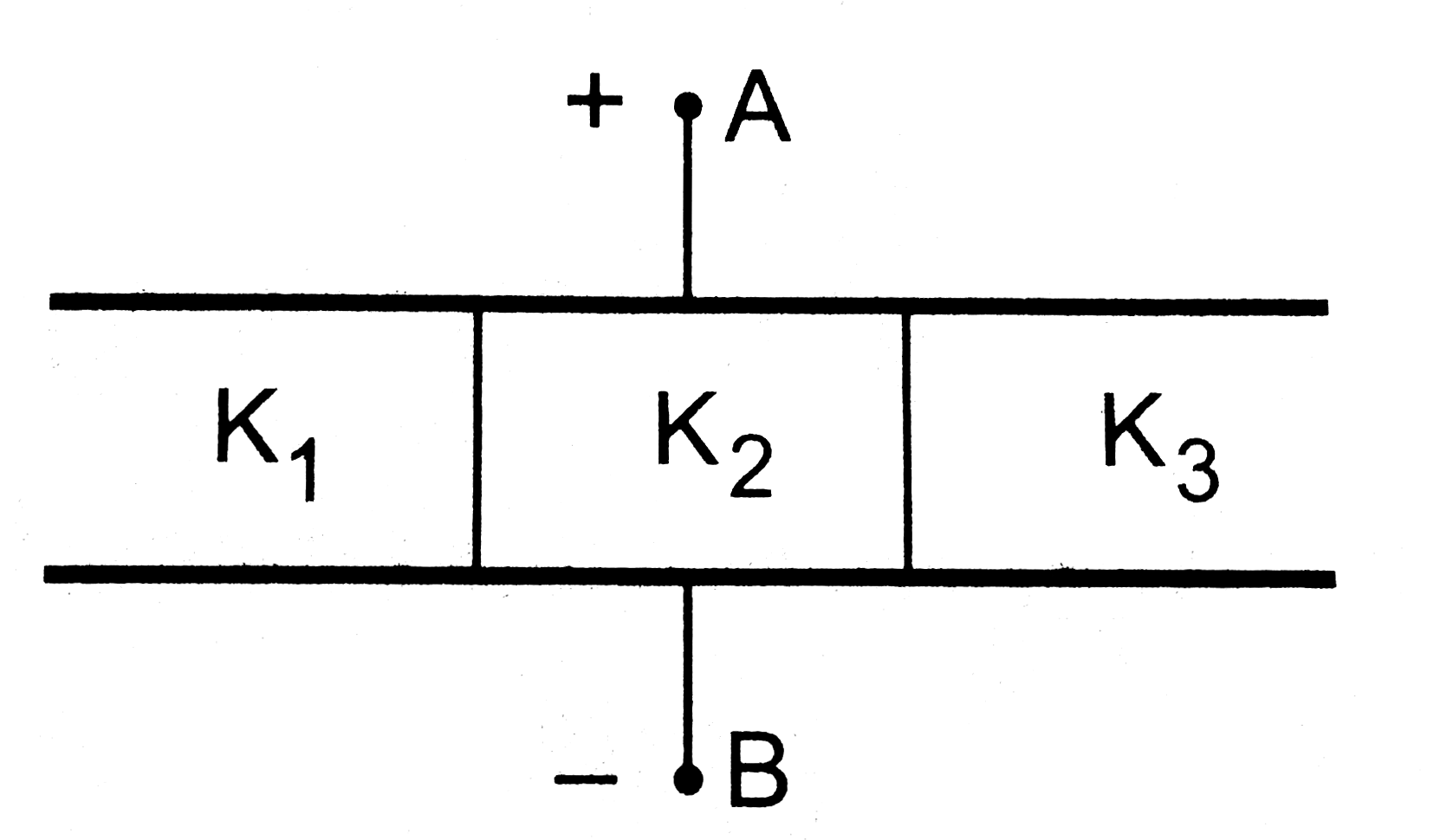 View Solution
View SolutionThe space between the plates of a parallel plate capacitor is completely filled with a material of resistivity 2×1011Ωm and dielectric constant 6. Capacity of the capacitor with the given dielectric medium between the plates is 20μF. Find the leakage current if a potential difference 2500V is applied across the capacitor.
View SolutionThe space between plates of a parallel plate capacitor is filled by a dielectric and it is charged and then battery is removed. Now dielectric slab is slowly drawn out of the capacitor parallel to the plates. The variation of the potential of capacitor with respect to the length of the dielectric plate drawn out is
View SolutionConsider a parallel plate capacitor. When half of the space between the plates is filled with some dielectric material of dielectric constant K as Shown in Fig. (1) below, the capacitance is C1 . However , if the same dielectric material fills half the space as shown as shown in Fig. (2), the capacitance is C2. Therefore, the ratio C1:C2is
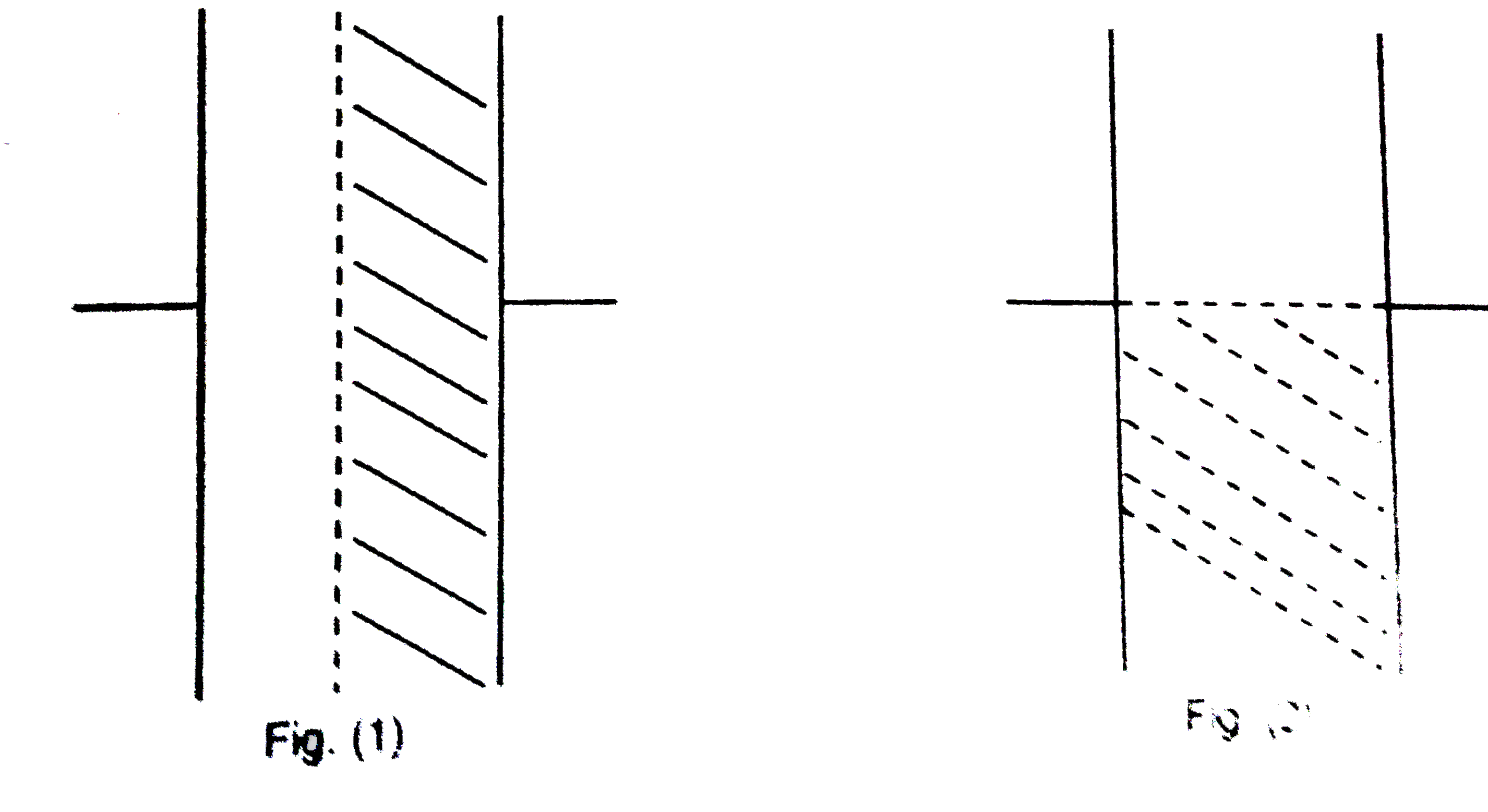 View Solution
View SolutionThe space between the plates orf a parallel plate capacitor is completely filled with a meterail of resistaivity 2×1011Ωm and dielectric constant 6. Capacity of the capacitor with the given dielectric medium between the paltes is 20uF. Find the leakage current if a potential difference 2500 V is applied across the capacitor.
View Solution

